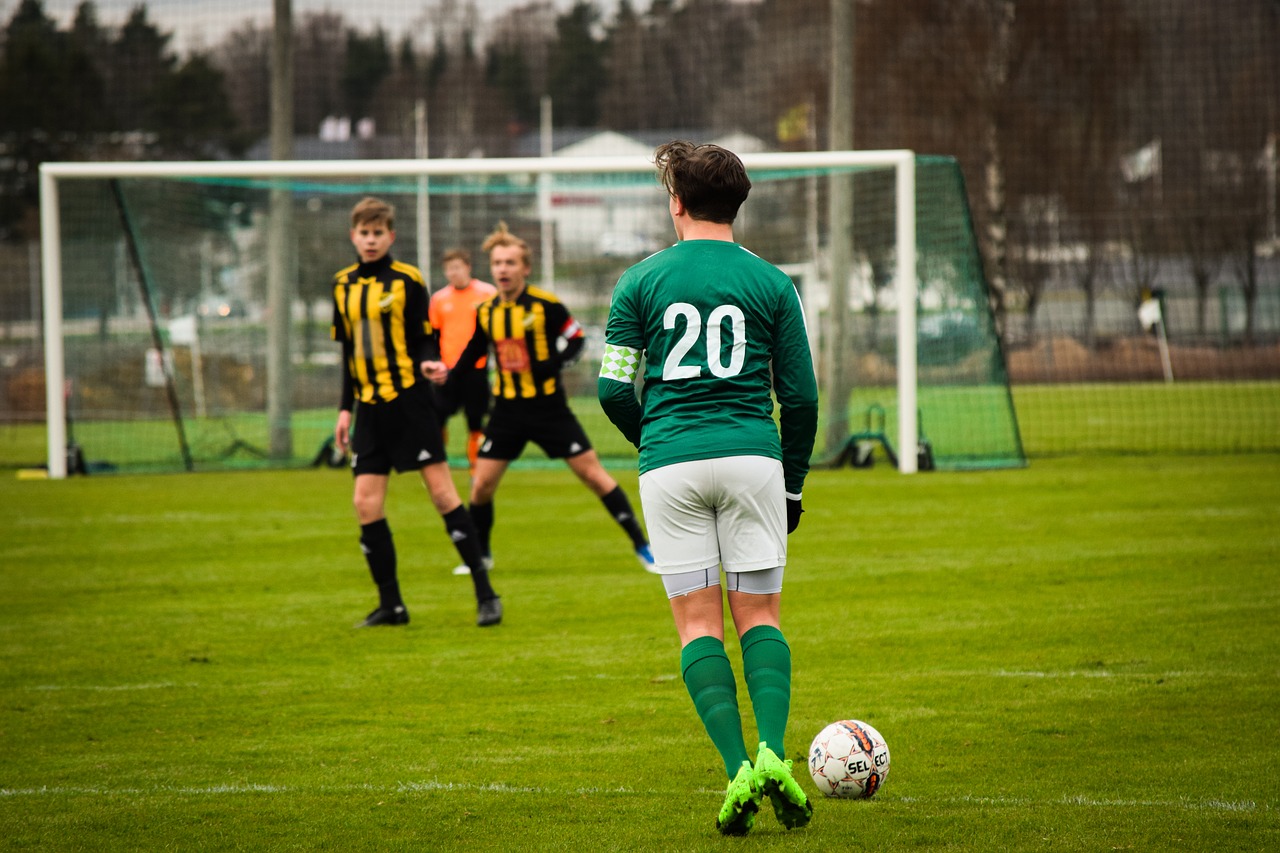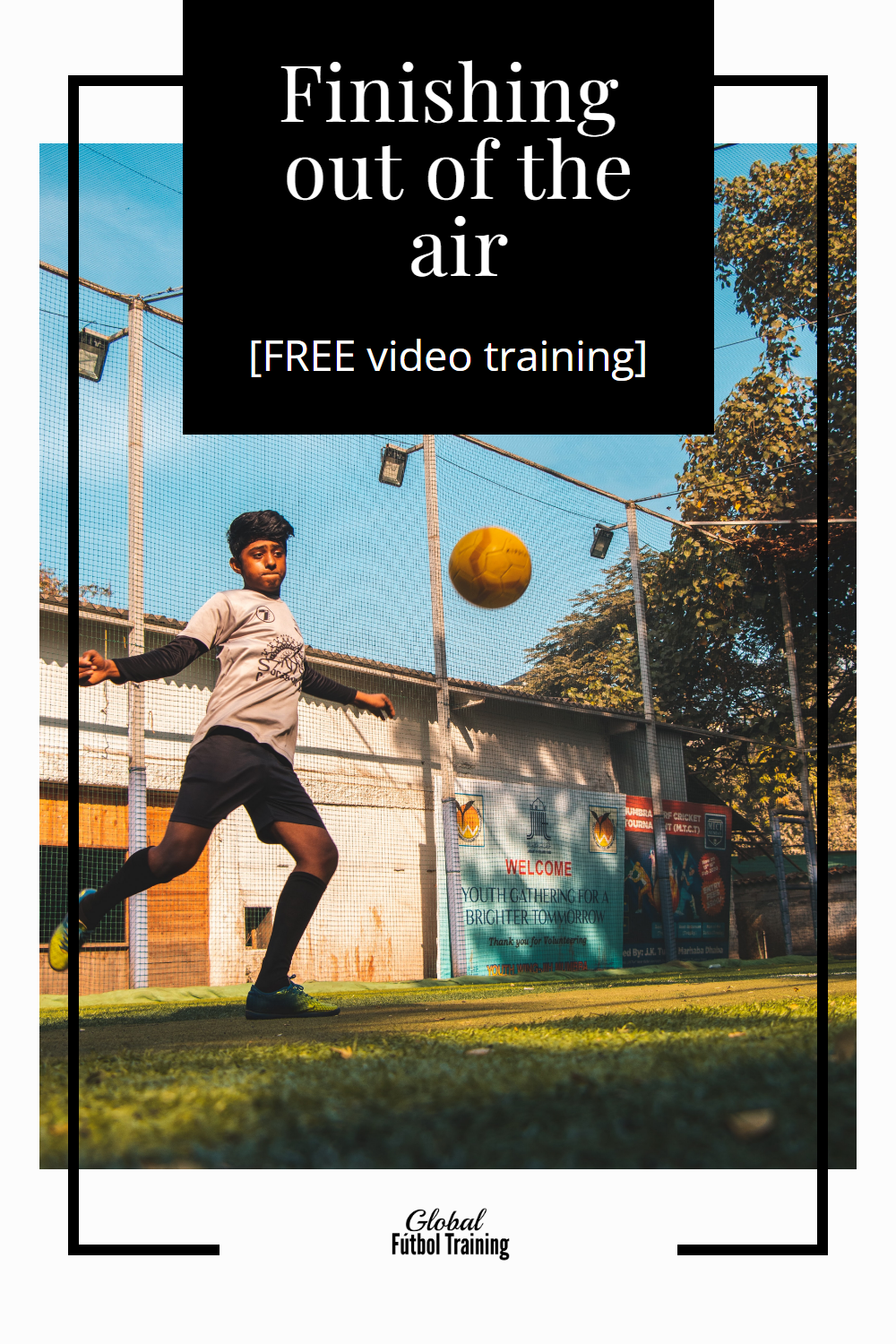When it comes to crossing and finishing it’s important to know where to cross the ball and make runs. Most goals are scored between the 6 yard box and penalty spot (12 yards from goal). Makes sense to spend a lot of time on different crosses coming in. Some people might think to replicate a real situation by crossing a ball from distance at full speed. Instead it’s better to practice closer up with light accurate crosses. This way the player gets better faster. You want to get high reps to boost your skill and confidence. These all work together in the soccer players development.
Crossing explained to youth soccer coaches, parents and players
For younger or novice soccer players it’s important to know what crossing is. It’s when a player passes the ball from the outside of the field to the middle.
The hopes are that a teammate is there to score from the cross.
It’s important to know where you cross the ball from.
Crossing the ball is when you’re in the attacking third, not defensive third. To describe locations of the field in soccer, we use the following terms. Attacking/final third, middle and defensive third.
If you pass/cross from the outside to the middle in the defensive third it wouldn’t be considered a cross.

Finishing drill to improve balls crossed in the air
Scoring off a volley is definitely an advanced skills and takes practice.
When finishing balls out of the air, we practice volleys on goal [vs head] for 2 reasons.
- it very difficult and takes time to finish with the foot.
- You don’t want players heading 50-100 times like we would with feet.
We usually only do 1 or 2 rounds of headers every other week [to protect the brain]. Unless it’s a college or pro goal scoring forward who needs to be stronger in the air.
When it comes to scoring side volleys and flicks, there’s a lot to it. Inside of the foot, laces, outside of the laces, headers, flick on headers, pretty goals and ugly goals.
When working in front of goal remember, “ugly goals count too”… It’s important for players to know that ugly goals count because they get embarrassed easy.
Scoring these types of goals are hard and sometimes it’s impossible to be clean with the connection.
Kids and college players like to hear that ugly goals count. It takes the pressure off.
Fun challenging drill using a wet tarp
Sometimes it’s good to change things up…
The wet surface makes the ball move fast! Therefore you build skill, confidence and quick reflexes.
3 reasons this helps:
- It builds your reaction/reflexes – making it easier to score off dry ground.
- It’s different to keep players engaged and the brain stimulated because most training is all about reps [the same things over and over].
- Players love the challenge and it’s fun, even for college players.
Crossing from the goal line
This is your most common cross…
Crossing from the goal line is where players dribble to the end of the field and cross from there.
It’s what many think is the only way to cross, although it’s not even half of it.
College players have told me their coach wanted them to dribble all the way down and then cross the ball.
This works great and is actually hard for the goalkeeper because they have a harder time seeing the ball and runners.
Players shouldn’t be told to cross only from the endline.
It all depends on the situation as to when and where to release the ball.
When crossing the ball from the goal line you probably see the cross go behind the goal or to the keeper.
The cross needs to be played back on top of the 6 yard box or pk area. This is also known as playing a ball 45.
It’s the 45 degree angle, which is playing it back from where you’re facing.
There’s another term called ‘square ball‘ which is directly to the side.
A square ball crossed from the goal line would go to the keeper.
So play the ball 45 in these situations.
This type of pass is not easy to do!
It’s why you see so many crosses go to the goalie or worse, behind the goal.
Early cross from the corner of the 18
Two situations I can think of right away, when it comes to the “early cross”.
#1 imagine it’s a corner kick for ‘Green Team’ and so ‘Green Team’ has everyone pushed up at least to the half line.
After the corner is taken, let’s say ‘Yellow Team’ clears the ball out and gets the ball wide.
In this case it might be a 2v3. 2 attacking players going against 3 defensive players with tons of space in behind the defenders.
The player with the ball can play an early cross (aiming outside the 18) in behind the defenders, to the forward running onto the ball.
If the pass is accurate and the run is on time, you have a 1:1 with the keeper.
#2 could be when everyone is already in the attacking half.
Let’s say the ‘Green Team’ is possessing the ball, but the ‘Yellow Team’ has 5 or 6 players along the back line.
In these situations it’s hard to get shots on goal.
If you can get the ball deep close to the goal line, maybe in the corner.
This would force the ‘Yellow Team’ to drop all the way back.
Then ‘Green Team’ play the ball back to a midfielder or outside back who is wide.
As the ‘Yellow Team’ is stepping up, the “Green Team” can cross a ball in behind (aiming near the pk spot/12 yards out) as they are moving up.
It’s easier for the forwards to get separation and get on the end of the cross.

Crossing and finishing both high and low
I remember thinking that when crossing and finishing, the pass/cross needed to be in the air.
Most kids think the same thing still.
It’s seems crossing balls in the air is what most coaches do when the work on crossing.
One of the biggest differences in watching the top pro teams compared to everyone else is this…
The top pros usually cross low, while youth to college mostly cross high.
When finishing it’s usually easier when the ball comes on the ground… Unless it’s bouncing low on the ground. Those are unpredictable and difficult.
Another thing about the best players and teams is they can cross low, even when there are 6 defenders back.
Even when the defenders know where they are going to cross the ball it’s hard to stop.
One thing to know in these situations, is the crosser is usually inside the 18 yard box.
Don’t forget they player is wide in this situation.
Being closer, inside the 18 is key.
If you are too far out, it’s hard to cross on the ground with enough power, but sometimes has to be done.
Also the keeper or defenders would have time to intercept the ball.
When you’re wider than the 18 yard box, it’s probably best to cross high.
The biggest challenge for defenders is seeing the player and ball
One of the hardest things for defenders is being able to see the ball out wide, and the runners behind.
If you’re a defender, try to check your shoulder when you can.
This allows you to quickly see and know where the runner is.
When playing against teams that are good at crossing and finishing, you have to stay extra tight on your mark.
This is the #1 way teams lose games.
If you’re an attacking player, remember that this is very difficult for defenders.
Make your crosses count, by playing them in the right place (between the 6 yard box and the pk spot and sometimes 18).
If you are the runner, make sure you time your run so you can meet the ball in this area.
Crossing and finishing is a beautiful thing because the defenders know it’s coming, but can’t stop it the whole game.
Even when there are 7 defenders vs 3 attackers inside the 18 you still see goals happen.
The main reason is because the defenders can’t see everything at once.
If the cross and the run are timed and accurate it can’t be stopped.
Never forget, if your team is down 1 or 2 goals with 5 or 10 minutes left, don’t give up!
Remember, most goals are scored in the first and last 5 minutes of each half.
Improve crossing and finishing in one drill
In the drill below, learn how to improve your crossing and finishing skills in 1 drill.
This helps you get high reps.
If you are training on your own and actually cross the ball from wide to the middle, you then have to go get all the balls.
For younger players ages 9-14 or even HS, I put them about 6-10 yards from the goal.
This way they don’t have to think about how hard they kick, but more how they kick. It’s not an easy drill, especially with the weaker foot.
Watch University of Texas Longhorns player, Sydney Nobles work on this drill below.
Shooting across the front of the goal like this ↑ is similar to crossing because you have to kick the ball to the side of where you’re facing.
Crossing and finishing after a build up
A good drill for groups of 6-10 players is one that helps build different skills and keeps all the players moving.
With groups/teams you don’t want players standing in lines.
This 20 second video shows how to build up a play ending in crossing and finishing.
You can adapt how you want.
Our Most Popular Posts:
- 3 ways to strike the ball with power
- How to boost confidence in soccer
- 8 best 1st- touch drills
- Expert dribbling tips
- Goal side defending
Follow @GFTskills on Social Media




